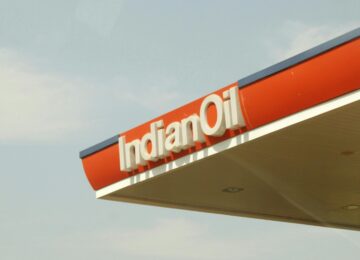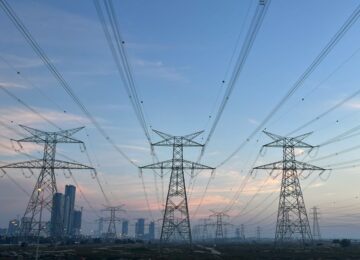By Anupama Nair
Mumbai, April 13
The Jallianwala Bagh massacre, also known as the Amritsar massacre, took place on the Baisakhi Day i.e., 13 April 1919, when General Reginald Dyer ordered troops of the British Indian Army to fire their rifles into a crowd of unarmed Indian civilians, in Jallianwala Bagh, Amritsar killing thousands and injuring many more. A visit of Jallianwala Bagh after all these years leaves me in disbelief how a human being can order the killing of thousands of men, women and children. It is said the Shaheede- azam Bhagat Singh visited Jallianwala Bagh as a young boy and swore to free his motherland from the British rule. Even after 102 years my mind is filled with sorrow when I see in my mind’s eye the innocents try to save their lives from the bullets of the British soldiers, majority of whom where surprisingly Indians.
Before I talk about Jallianwala Bagh I want to take you down memory lane, how merchants who came to do trade with India within 300 years became the masters of the land from Khyber to Chittagong and from Kashmir to Comorin (now Kanya Kumari), i.e., entire sub-continent. The English East India Company was formed by merchants of England to trade with Asia and India the “golden bird” in particular and America. It was formed by Royal Charter on New Year’s Eve on 1600, The Mughal Emperor gave them permission to trade in India. They managed to reduce the influence of Portuguese, Dutch and French in India, by 1707, they began to be called as the British East India Company.
The Battle of Plassey (1757) and Battle of Buxar smoothened their path to conquer the sub-continent. By spinning a web of deceit, they succeeded ruling the entire sub-continent by 19th century. Jawaharlal Nehru in his book Discovery of India quoted “British rule in India had an unsavory beginning and something of that bitter taste has clung to it ever since”. The rule of the Company was a “reign of terror”. The last Governor General never imagined the Enfield Rifle (rumored to be greased with flesh of pigs and cows) will have the soldiers under Mangal Pandey revolt against the Company, and such rebellion will rage through India. Who can forget the bravery of Mangal Pandey (who was hanged), Rani Laxmi Bai of Jhansi and Tatya Tope? The First Battle of Independence or Revolt of 1857, bought an end to the rule of the East India Company or Company Bahadur. India then came under the rule of British Crown. Queen Victoria was called “Kaiser e Hind”.
This government was also no better. Freedom of the Indians was brutally suppressed. The government forced the Indian soldiers to fight the First World War (1914-1918). Many soldiers lost their lives. After the War, Indians expected some ease of strict laws. The Montagu-Chelmsford Report, in 1918, recommend limited local self-government. However, the government of India passed a repressive act called Rowlett Act in early 1919, which essentially extended the war-time restrictions. The Act was met by widespread anger and discontent among Indians, notably in the Punjab region. General Reginald Dyer was given the responsibility to maintain law and order in Punjab by the Governor of Punjab Michael O Dwyer.
On April 13, 1919, thousands of innocent men, women and children met in Jallianwala Bagh to protest against Rowlett Act and the arrest of local leaders Kitchlew and Satyapal. General Dyer banned all public meetings in Punjab. People ignored his orders and by 3 pm around 15,000 people assembled in Jallianwala Bagh — a mix of speakers, listeners, and picnic makers. An enraged General Dyer went with his army and fired at the innocents. Without any warning, the troops opened fire on the crowd, reportedly shooting hundreds of rounds until they ran out of bullets. It is not certain how many died in the bloodbath, but, according to one official report, more than 1,000s died and about 1,200 more were wounded. After they ceased firing, the troops immediately withdrew from the place, leaving behind the dead and wounded. During the massacre, there were no escape routes. The narrow passage was blocked by the army and people either ran towards the walls or jumped in the well called “martyr’s well”.
The shooting was followed by the proclamation of martial law in the Punjab that included public floggings and other humiliations. Indian outrage grew as news of the shooting and subsequent British actions spread throughout the subcontinent. The great Bengali poet and Nobel laureate Rabindranath Tagore, renounced the knighthood that he had received in 1915. The Hunter Commission set up for inquiry in 1920 heard Dyer’s own damning testimony. He admitted he could have dispersed the crowd without firing, but chose not to do so because “they would have come back and laughed”. He said he would have used machine guns to kill even more if he could have, and that he saw no reason to help the wounded. By July 1920, Dyer’s support had diminished to such a level that only few imperialist enthusiasts and hardline officials, like Sir Michael O’Dwyer supported in him. Even Sir Winston Churchill condemned General Dyer in the House of Commons. But he was supported and seen as the “savior of the British empire” in The House of Lords.
Udham Singh (26 December 1899–31 July 1940) was an Indian revolutionary belonging to the Ghadar Party, best known for his assassination in London of Michael O Dwyer, the former governor of Punjab, on 13 March 1940. He was deeply influenced by Bhagat Singh and his revolutionary group. The assassination was done in revenge for Jallianwala Bagh, in 1919, for which O'Dwyer was indirectly responsible. He was tried and convicted of murder and hanged in July 1940. In the court he said “I did it because I had a grudge against him. He deserved it”. He is called as shaheede-azam. A district, Udham Singh Nagar in the Indian state of Uttarkhand was named after him to pay homage in October 1995 by the government.
The Jallianwala Bagh Massacre turned millions of moderate Indians from patient and loyal supporters of the British Raj into nationalists who would never again place trust in British “fair play.” It thus marked the turning point for Indian Nationalism and finally we could see “the dawn of freedom” on August 15, 1947, due to the efforts of many revolutionaries like Netaji Subash Chandra Bose, Kudiram Bose, Sardar Patel and others.
Now the area houses a museum, gallery and a number of memorial structures. The seven-acre garden site of the massacre is located near the Golden Temple Complex, and is managed by the Jallianwala Bagh National Memorial Trust, which was established as per the 'Jallianwala Bagh National Memorial Act, 1951’. A portrait of Udham Singh is displayed in the gallery and his ashes are still kept in the museum. There is a notice that said “this place is saturated with the blood of thousands of Indian patriots, who were martyred in a non-violent struggle to free India from British Dominion, General Dyer of the British Army opened fire on unarmed people. Jallianwala Bagh is thus an everlasting symbol of non-violent & peaceful struggle for freedom of Indian people and the tyranny of the British.”
After Independence Her Majesty Queen Elizabeth visited the site three times in 1961, 1983 and 1997. Prince Philip, known for his many gaffes over the years, once hit the headlines in India after he reportedly questioned the number of casualties in the 1919 Jallianwala Bagh massacre. Erstwhile British Prime Minister David Cameron visited the site in 2013. Till now even after a century no British Prime Minister or Royalty apologized for the massacre. However, the Prime Minister Theresa May, told the British parliament instead “We deeply regret what happened and the suffering caused by the massacre."
My heart swells with pride for those innocents who became martyrs and indirectly free Bharat Maa from her slavery and we are today on our way on becoming a developed country under the leadership of our great Prime Minister. We even managed a successful landing on the moon. We will achieve more in the coming years.


































Great wound still. I be been to see Jallianwalla bagh and the bad memories stay
British should apologise
British bruatilty. But nothing new
British must at least apologize. Kudos Anupama and Media Eye.
Shame on the British.
Please publish article on Udham Singh.
Please publish article on Udham Singh.
Please publish article on Udham Singh.
British Queen should apologize
Shame on the British
Hail those martyrs who gave up
their lives.
British empire was built on massacring innocents around the world.
British empire was built on massacring innocents around the world.
British empire was built on massacring innocents around the world.
British empire was built on massacring innocents around the world.
National shame for Britain
Nice article
Ashamed of this massacre.
Shame on you British for massacring so many innocents.
Karma will hit the Brits one day.
Shame on the Brits.
Act of cruelty.
Worst kind of massacre.
Great man made tragedy.
Great man made tragedy.
Really sad
Really sad
Real sad. I cried when I visited there.
Real sad. I cried when I visited there.
Really sad story
Really sad story
Really sad story
Really sad story
Great shame on the British.
Great shame on the British.
Great shame on the British.
Great shame on the British.
Great shame on the British.
Great shame on the British.
Shame on the British.
Shame on the British.
British should have apologized
British should have apologized
There are many people who fought for our Independence, but credit given to only two.
There are many people who fought for our Independence, but credit given to only two.
There are many people who fought for our Independence, but credit given to only two.
Great tragedy. Udham Singh sought revenge.
Great tragedy. Udham Singh sought revenge.